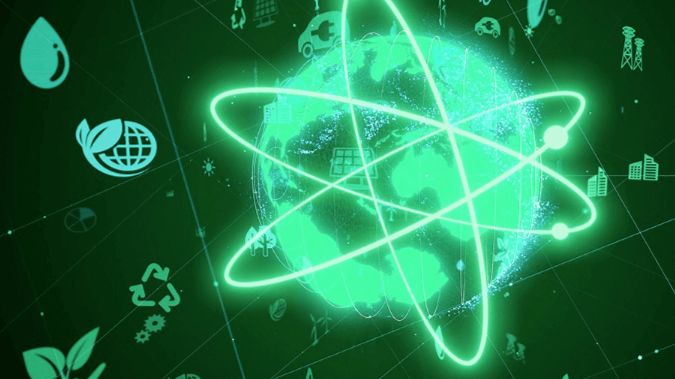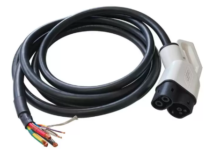How is the USA leveraging technology for environmental sustainability?

Introduction
The USA is at the forefront of integrating technology to promote environmental sustainability. From renewable energy initiatives to smart agricultural practices, technological advancements are driving significant progress in reducing environmental impacts. This article explores the various ways the USA is utilizing technology to foster a more sustainable future.
Renewable Energy Innovations
One of the most prominent areas where technology is making a significant impact is renewable energy. The USA has invested heavily in solar, wind, and hydroelectric power. Solar technology, in particular, has seen remarkable advancements with improved efficiency and reduced costs. Solar farms and rooftop installations are becoming more common, providing clean energy and reducing reliance on fossil fuels.
Advancements in Wind Energy
Wind energy is another critical component of the USA’s renewable energy strategy. Innovations in turbine technology have increased efficiency and lowered costs. Offshore wind farms are being developed along the coasts, harnessing the strong and consistent winds to generate substantial amounts of electricity.
Hydroelectric Power Expansion
Hydroelectric power remains a vital source of renewable energy in the USA. Modernization of existing dams and the development of new small-scale hydro projects are enhancing capacity and efficiency. These projects provide a stable and reliable source of clean energy.
Smart Grids and Energy Storage
The integration of smart grids and advanced energy storage systems is revolutionizing the energy sector. Smart grids allow for better management of energy distribution, reducing waste and improving reliability. Energy storage technologies, such as lithium-ion batteries, enable the storage of excess renewable energy for use during peak demand times.
Electric Vehicles and Sustainable Transportation
The transportation sector is undergoing a transformation with the rise of electric vehicles (EVs). The USA is investing in EV infrastructure, including charging stations and incentives for EV purchases. Technological advancements in battery technology and autonomous driving are making EVs more accessible and efficient.
Public Transportation Innovations
In addition to EVs, the USA is leveraging technology to enhance public transportation. Cities are adopting electric buses and developing smart transit systems to reduce emissions and improve efficiency. These innovations are critical for reducing the carbon footprint of urban areas.
Smart Agriculture and Precision Farming
Agriculture is a significant contributor to environmental sustainability efforts. The USA is implementing smart agriculture and precision farming techniques to optimize resource use and reduce environmental impact. Technologies such as drones, IoT sensors, and AI-driven analytics are being used to monitor crop health, manage irrigation, and apply fertilizers more precisely.
Vertical Farming and Urban Agriculture
Vertical farming and urban agriculture are gaining traction as sustainable solutions to food production. These technologies use less water and land compared to traditional farming methods. By growing food closer to urban centers, vertical farms reduce the carbon footprint associated with transportation.
Water Conservation Technologies
Water conservation is a critical aspect of environmental sustainability. The USA is leveraging technology to improve water management in various sectors. Smart irrigation systems, leak detection sensors, and wastewater recycling technologies are helping to conserve water resources and reduce wastage.
Innovative Waste Management Solutions
Waste management is another area where technology is playing a crucial role. The USA is adopting advanced recycling technologies, waste-to-energy systems, and smart waste management solutions to reduce landfill use and promote recycling.
Recycling Technologies
Technological advancements in recycling are improving the efficiency and effectiveness of recycling processes. Automated sorting systems, chemical recycling, and biodegradable materials are helping to reduce the environmental impact of waste.
Waste-to-Energy Technologies
Waste-to-energy technologies are transforming how waste is managed. These systems convert waste into usable energy, reducing the amount of waste sent to landfills and providing a renewable energy source. Innovations in this field are making waste-to-energy solutions more efficient and environmentally friendly.
Carbon Capture and Storage (CCS)
Carbon capture and storage (CCS) technology is being developed and implemented to reduce greenhouse gas emissions. The USA is investing in CCS projects that capture carbon dioxide from industrial sources and store it underground, preventing it from entering the atmosphere.
Green Building Technologies
The construction industry is embracing green building technologies to create more sustainable buildings. Innovations such as energy-efficient materials, smart building systems, and sustainable design practices are reducing the environmental impact of buildings.
Energy-Efficient Building Materials
The use of energy-efficient building materials, such as insulated panels and low-emissivity windows, is reducing energy consumption in buildings. These materials improve insulation and reduce the need for heating and cooling, leading to lower energy usage.
Smart Building Systems
Smart building systems integrate IoT sensors and automation to optimize energy use and improve building performance. These systems can monitor and control lighting, heating, and cooling, ensuring efficient use of resources.
Sustainable Design Practices
Sustainable design practices, such as green roofs, passive solar design, and the use of renewable materials, are becoming standard in the construction industry. These practices contribute to the creation of buildings that are environmentally friendly and energy-efficient.
Environmental Monitoring and Data Analytics

Environmental monitoring and data analytics are essential for understanding and addressing environmental challenges. The USA is using advanced sensors, satellite imagery, and data analytics to monitor environmental conditions and make informed decisions.
Air Quality Monitoring
Air quality monitoring technologies are being used to track pollution levels and identify sources of emissions. This data is critical for developing strategies to improve air quality and protect public health.
Water Quality Monitoring
Water quality monitoring technologies are helping to ensure the safety and sustainability of water resources. Sensors and data analytics are used to detect pollutants, monitor water levels, and manage water quality in real-time.
Biodiversity and Ecosystem Monitoring
Technologies such as satellite imagery and remote sensing are being used to monitor biodiversity and ecosystem health. These tools provide valuable data for conservation efforts and help protect endangered species and habitats.
Public Awareness and Education
Public awareness and education are crucial for promoting environmental sustainability. The USA is leveraging technology to educate and engage the public on environmental issues. Online platforms, social media, and mobile apps are being used to spread awareness and encourage sustainable practices.
Educational Platforms and Resources
Educational platforms and resources are providing valuable information on environmental sustainability.






